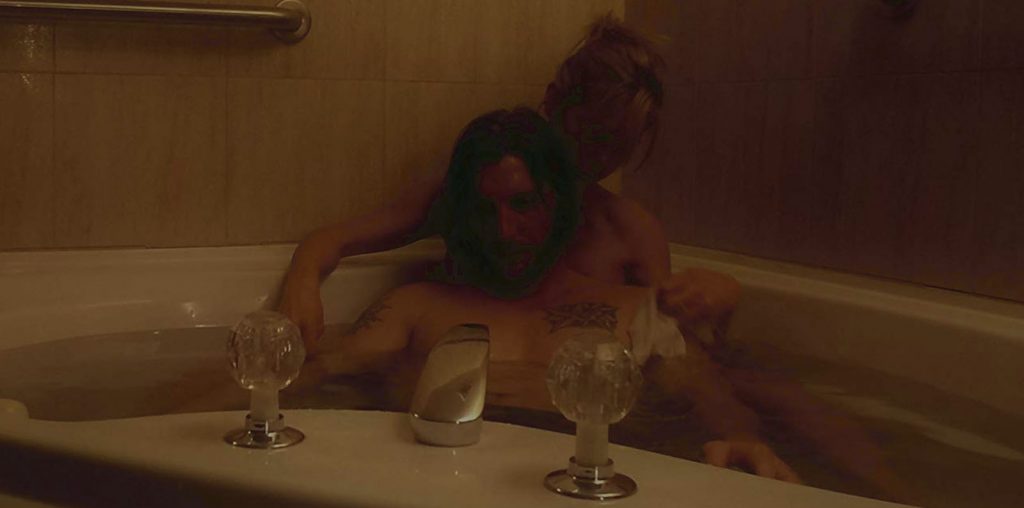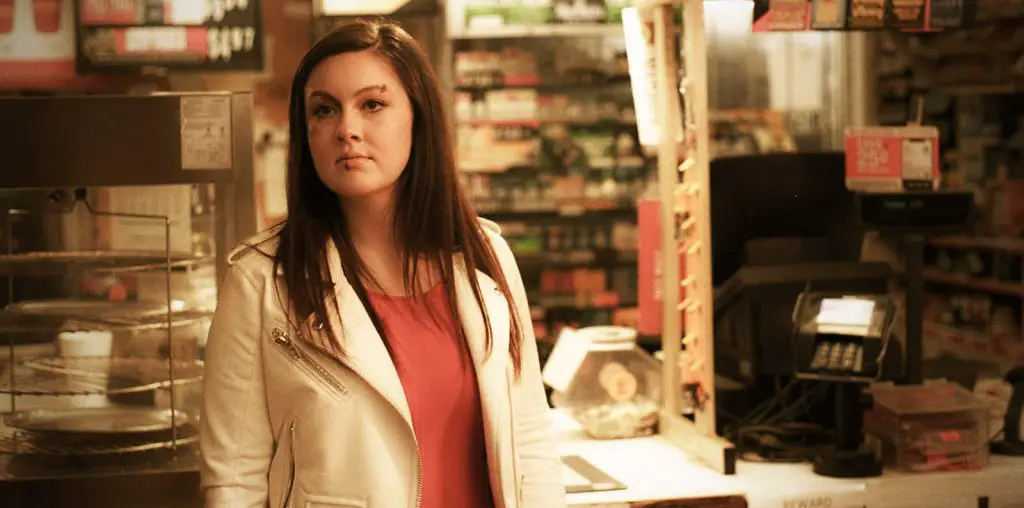
At long last, we have a film made by people who get it. A film that shows a true, melancholy understanding of the world as it truly is. A film you can have an actual relationship with.
Thank the movie gods for “Ghost World”!
Directed with an amazingly light touch by Terry Zwigoff, whose “Crumb” was one of the best documentaries of the ’90s, “Ghost World” is based on the small-press comic book – er, graphic novel – by Daniel Clowes. As such, the film’s geek appeal should be off the charts. So do your part and don’t let this fine, delicate gem of a comedy go unappreciated.
“Ghost World” tells the simple story of Enid, beautifully played by Thora Birch, who we first see alone in her room dancing along to ’60s Indian musical number. Enid is a sardonic teen who has just graduated from some nameless high school. (In one of the film’s many tasty details, a banner outside the school proclaims the sponsorship of Hostess and Tropicana.) With her slightly more conventional best friend Rebecca (Scarlett Johansson), Enid plots a summer of finding and job and an apartment, and at some point getting a life.
Enid and Rebecca’s current lives consist of needling convenience store clerk Josh (Brad Renfro) and otherwise making fun of everyone whose paths they cross. One such soul is middle-aged Seymour (the great Steve Buscemi), a mild fellow who collects ancient 78 records and dresses in about forty shades of brown.
Enid starts toying with Seymour, feigning interest in his arcane musical obsessions and generally pitying the poor sap. But “Ghost World” really takes off when Enid gradually finds herself digging Seymour. It’s a lovely thing to behold, but the film’s wish-fulfillment element can’t be overstated. What gawky, aging vinyl junkie wouldn’t relish being followed around by precious Thora Birch, especially in a vinyl Catwoman mask?
Still, there’s not a cooler image to be seen right now than that of Birch lying enraptured in her room, listening to a scratchy old recording of Skip James’ “Devil Got My Woman”. This is the key song in a film filled with music; Zwigoff characterizes James as a “strange, suspicious, secretive and solitary” figure. It’s a description that certainly fits Seymour and could soon fit Enid as well, if she’s not careful.
While Enid may seem snide and sardonic at first, she’s quietly bursting with youthful energy, wide-eyed and even vulnerable in her way. (For instance, her valiant attempt to style herself as an authentic, green-haired 1977 punkette is met with universal scorn.) But underneath Enid’s enthusiasm may be a glimmer of recognition; Seymour is nothing if not an older, lonelier version of her. Enid soon enough makes Seymour her pet matchmaking project. To her surprise, it’s not quite as much fun as she thought it would be.
It’s not unfunny, though. “Ghost World” can be utterly uproarious at times, especially in scenes involving poor Josh’s beef jerky-chewing nemesis, a white trash nightmare called Doug (Dave Sheridan, Deputy Doofy in Scary Movie). Also a riot is Enid’s hippy-dippy, touchy-feely art teacher Roberta, realized with sly wit by the always-reliable Illeana Douglas.
But the laughter is mainly gentle, subtle – subtlety being all but extinct in American moviemaking. “Ghost World”‘s beauty is in its divine little touches, such as a tossed-off line about the names Tiffany and Amber. The comedy here is honestly character-based, the dialogue never fails to be cutting and true, and the sight gags are smartly deployed. (There’s even a fart joke at one point, and it’s actually pretty funny.)
Warming up to the rhythms of the film may take some doing, however. At first it seems as if the editing is a bit lethargic; not every line zings, there’s some dead air here and there. But it’s most likely intentional – this world is one of lethargy. These characters breathe dead air. Not every line is meant to zing, really – this is definitely not a sitcom.
In fact, it’s downright strange to see characters allowed to freely discuss matters unrelated to the plot, such as their love of old music or their disdain for the petty absurdities of modern American life. As loving as he is toward the main characters, Zwigoff is also razor-sharp in his contempt for America’s generic, Coca-Colonized monoculture. The film was quite obviously shot in L.A., but the setting is meant to be Nowheresville. It’s a landscape of endless mini-malls, or in Zwigoff‘s trenchant phrase, “one big consumer theme park.”
As a veteran documentarian, Zwigoff‘s style is laid-back but never slack. He’s an unobtrusive observer, smart enough to realize that he’s blessed with a great script and a terrific cast. Unlike most of today’s aggressive pseudo-auteurs, Zwigoff is content to get out of the way and let the writing and acting work their magic. (In particular, Birch and Buscemi should both clear some trophy space for their career-best work here.)
It must be added that the impish essence of R. Crumb looms large over “Ghost World.” Zwigoff is obviously a kindred spirit, but so is Clowes. By all accounts this film was a true collaborative effort between writer and director, a perfect confluence of sensibilities. Seymour – the film’s conscience, who “can’t relate to 99% of humanity” – didn’t begin as a character in Clowes‘ comic. Zwigoff has said that he based Seymour partly on Crumb and partly on himself; both men are avid collectors of jazz and blues 78s.
In creating the part, Zwigoff has done Buscemi a favor. Seymour is his tangiest role in years, far from the squirrelly thug of Reservoir Dogs or the well-paid jester of Armageddon. All the charming qualities and sad-sack quirks are there, but we also sense a deeper sadness, a profound resignation. Buscemi’s Seymour is certainly a good laugh, but he also hurts. Any committed record collector will relate to his heartfelt aria about trading a life filled with love for a life filled with stuff. The girls don’t know, but the little men understand.
It’s guaranteed that this is the only “teen movie” you’ll ever see whose soundtrack consists mostly of rare ’20s blues tunes, from King Oliver on down. . .rare meaning that what you hear comes from the director’s own prized collection, among the few copies in existence. That’s love, that’s care – that’s personal filmmaking.
Furthermore, Enid’s drawings in the film – exquisite sketches of Buscemi, Renfro, even Don Knotts – turn out to be the work of one Sophie Crumb. How absolutely wonderful that, after the promise R. Crumb’s daughter showed at the conclusion of Zwigoff’s documentary, her talent has bloomed and is brought before the public in this film.
“Ghost World” has been crafted with love by artists who, unlike 99% of the “humanity” in Hollywood, have other concerns besides money and power. It presents characters who are generally more interested in the past – simpler times, maybe, and better music – than in the debased, dumbed-down present. One of its themes may be alienation, but that’s merely because Enid, Seymour and Rebecca think they’re the normal ones and everyone else is an alien. They take comfort in thinking they’re smarter than everyone else because, goddammit, they are. They’re a group of comically uncool characters you end up wanting to be just like.
When it’s all said and done, this pæan to the losers, misfits, outcasts and obsessives of the world proves to be nothing less than haunting. “Ghost World,” for whatever it’s worth, is the best film of the year.

